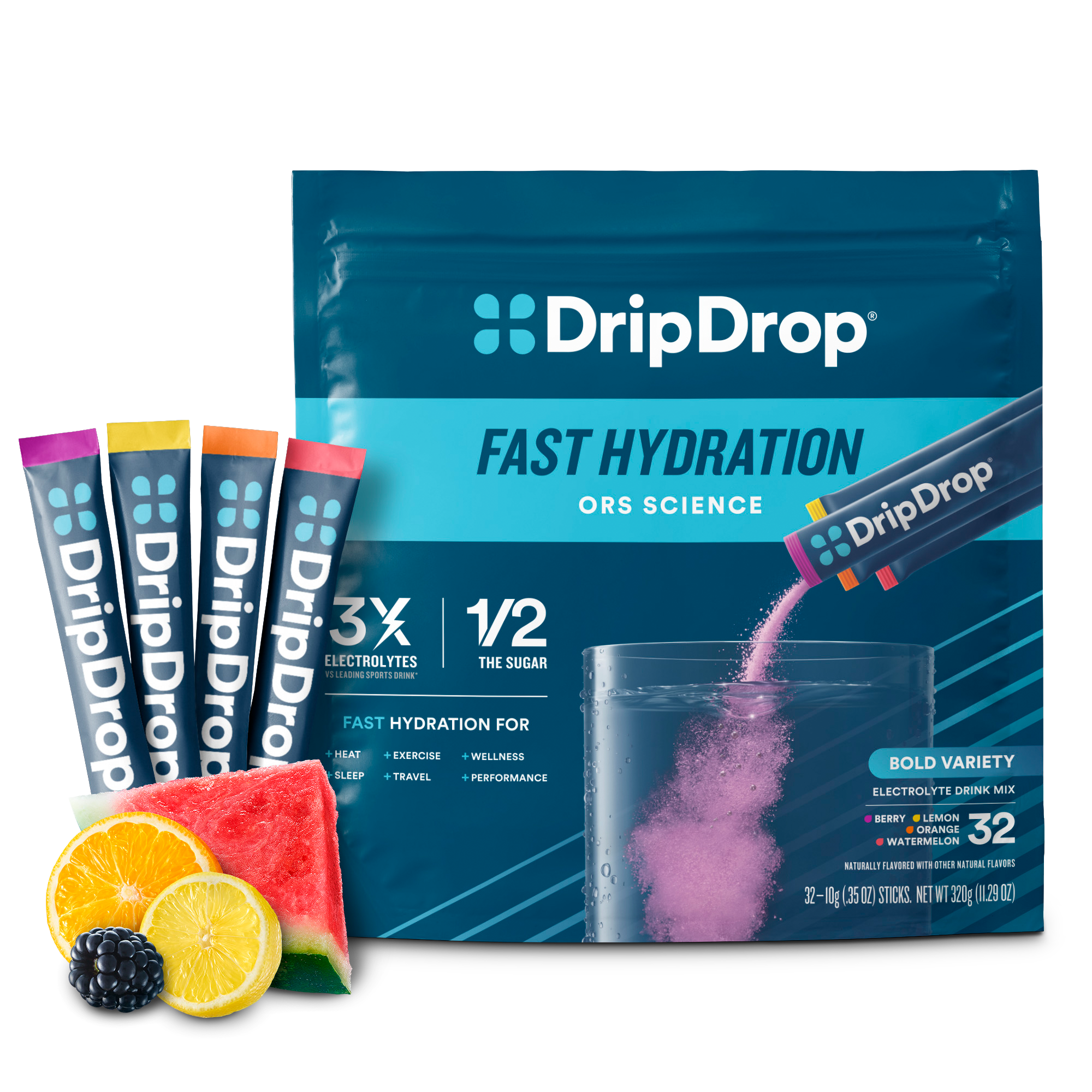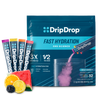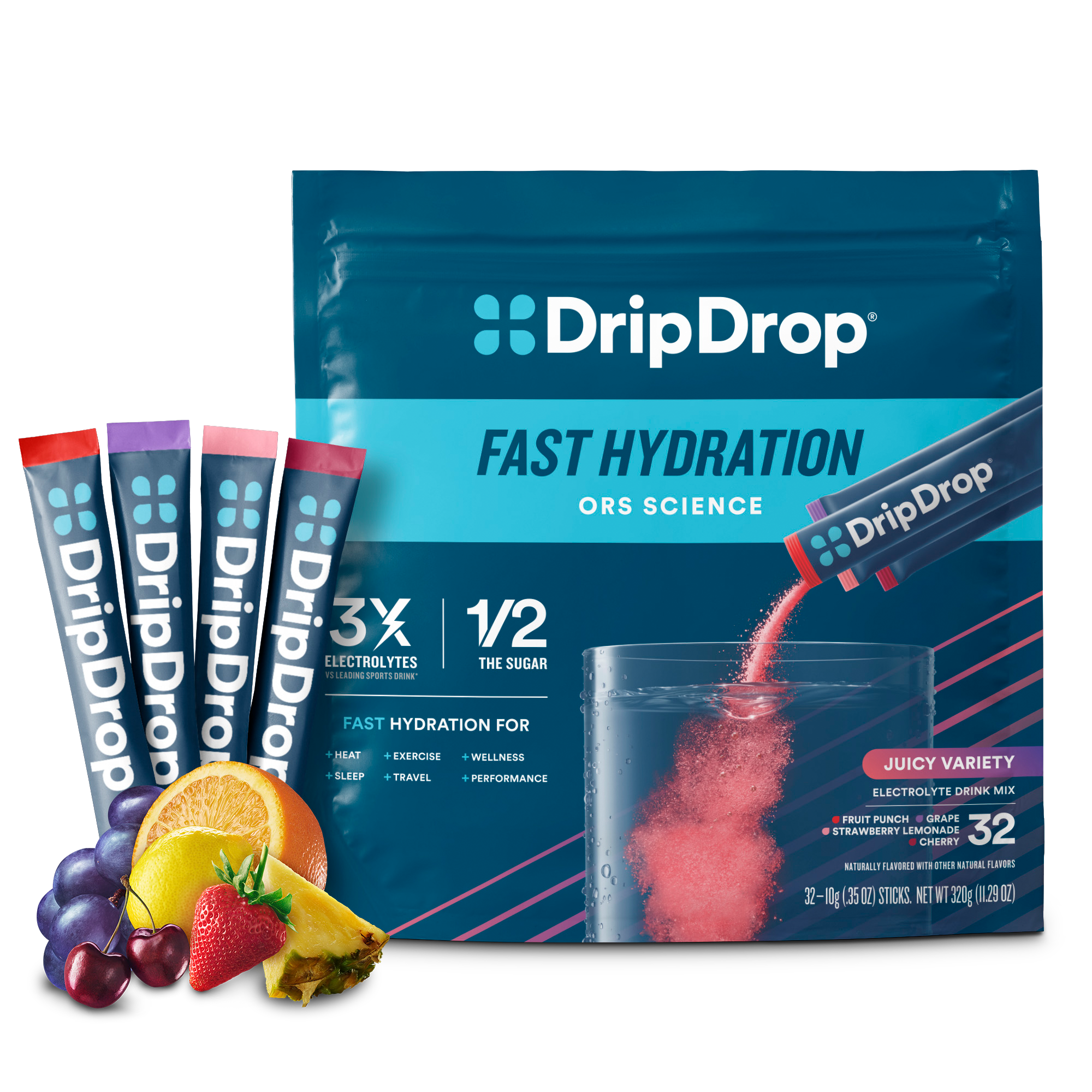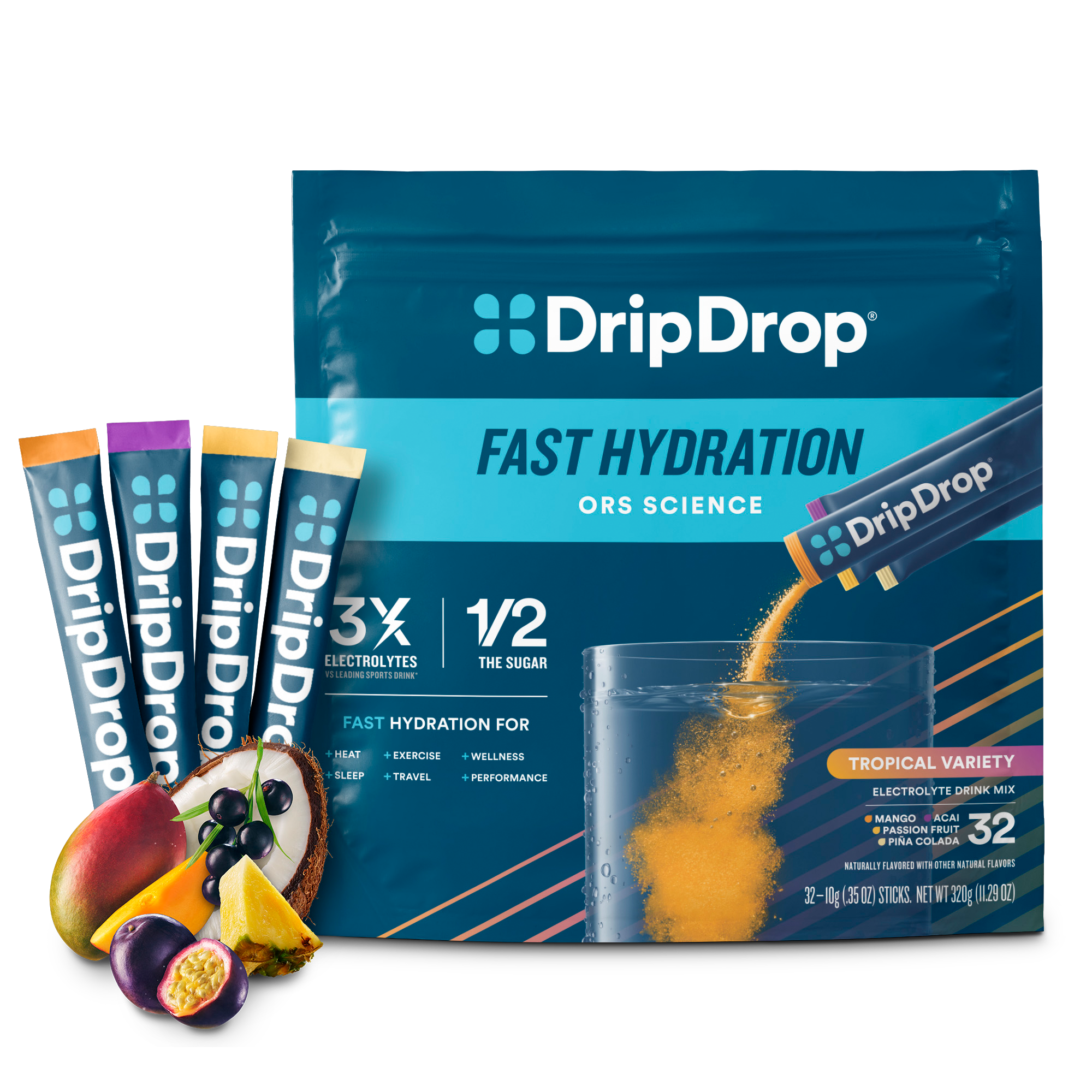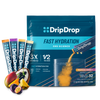Drinking enough fluids can be tough. Whether you’re running around taking care of your family, working hard at the office, or training for a physical competition, it’s easy to forget to hydrate. We often get caught up in our daily activities, forget to rehydrate, and soon find we don’t feel so great. That’s because dehydration signs can be uncomfortable and lead to dizziness or headaches. In severe cases, it can be life-threatening. That’s why it’s vital to know how to rehydrate.
Here, we’ll show you how to recognize the signs of dehydration and how to rehydrate quickly. You’ll have a better understanding of what your body needs to avoid dehydration and discover top tips for staying hydrated.
Why Hydration Is Vital
Dehydration is a condition where electrolyte and fluid loss is greater than electrolyte and fluid intake. Most people equate hydration to drinking water. It’s more complicated than that. Your body doesn’t just need water. It also needs a precise balance of electrolytes. Electrolytes include things like potassium, magnesium, calcium, sodium, and chloride. These electrolytes play a key role in your body function and overall health.
In fact, potassium and sodium help to bulk up fluid and blood volume and regulate blood pressure. Magnesium is vital for energy production and muscle function. Calcium isn’t just good for bone and teeth health. It also sends messages between neurotransmitters in your brain. When you don’t get enough electrolytes, dehydration — caused by an electrolyte imbalance — sets in. That means your body can’t function properly.
The same is true for fluids — our bodies are made of 60% water, and we need water to survive. When we don’t drink enough fluids or lose them too rapidly, dehydration occurs. Illnesses that cause diarrhea and vomiting can lead to dehydration. That’s because these signs result in rapid fluid loss. Excessive sweating can also lead to dehydration.
Certain medical conditions and medications like diuretics can also increase the risk of dehydration. Older adults and young children are more likely to get dehydrated. But any one of us can develop the condition. Even mild dehydration — fluid loss of less than 2% — affects performance and overall health.
How to Tell If You’re Dehydrated
Before we discuss how to rehydrate, it’s important to know when you’re dehydrated. Without enough fluids or electrolytes, different organs are affected and start functioning poorly. This results in mild to severe signs.
Here are the common signs of mild to moderate dehydration:
-
Dark urine or decreased urination
-
Constipation
-
Dry skin or dry mouth
-
Extreme thirst
-
Low blood pressure
Signs of severe dehydration include:
-
Difficulty concentrating or speaking
-
Irritability and confusion
-
Little or no urination for several hours
-
No sweating
-
Poor skin elasticity (also known as skin turgor)
-
Fainting
If you recognize the signs of severe dehydration, it’s important to seek medical attention from a qualified healthcare professional as soon as possible. Dehydration can cause long-term damage to organs and even death if left untreated.
How to Rehydrate
Rehydrating and hydrating may seem simple, but there are a few things you should know. Your first instinct may be to rehydrate fast. While it’s important to act quickly, drinking too much water too fast can lead to water intoxication. That’s because a large amount of water can dilute the all-important electrolytes, worsening dehydration. Instead of chugging water, take small sips of an oral rehydration solution the moment you notice signs of dehydration.
Your fluid levels can fluctuate throughout the day, especially if you’re engaging in physical activity. Make sure to increase your fluid and electrolyte intake whenever you do intense workouts or work outside in high temperatures. Focus on drinking plenty of fluids when you’re sick, especially if you have diarrhea or are vomiting.
When you need to hydrate or rehydrate, not all options are equal. While many people reach for sports drinks or plain water, these aren’t the most effective. That’s because water doesn’t contain many electrolytes, and other beverages often contain a poor balance of electrolytes — unlike oral rehydration solutions. In fact, many sports drinks and juices contain too much added sugar and not enough sodium electrolytes.
Some people also recommend eating foods with high water content, like melons and other fresh fruit. While these foods can help replenish lost water, they also don’t contain a good balance of electrolytes. That means you can address your water consumption, but you still may not get the electrolytes your body needs.
Manage and Avoid Dehydration With DripDrop
Here’s how to rehydrate: Increase your water AND electrolyte consumption at the first signs of dehydration. Start slowly, and be careful not to drink too much water too fast. Remember, it’s more than just drinking a few glasses of water. You also need to focus on replenishing lost electrolytes like sodium and potassium. The best way to do that is to add a solution like DripDrop to your dehydration protocol.
DripDrop was developed by a doctor on a mission to defeat life-threatening dehydration. The precise formula provides medically relevant electrolyte levels, improving on the World Health Organization’s Oral Rehydration Solution (ORS) standards with its delicious taste, giving you a medically viable ORS that also tastes great. By comparison, sports drinks contain about one-third the electrolytes of DripDrop and twice as much sugar.
For cases of mild to moderate dehydration, DripDrop is a fast, effective, and great-tasting remedy. The convenient packaging allows you to have DripDrop when you need it, where you need it.
Get started with our most popular multi-flavor pouch for dehydration relief fast. Or, learn more about how you can save up to 25% on every purchase when you subscribe.



